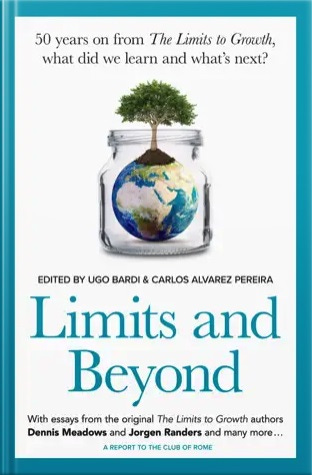⏳ What happens when you warn of civilizational collapse, but civilization doesn't collapse?
Also: 5 Quick Questions for … economic historians Mark Koyama and Jared Rubin on how the world became rich
In This Issue
The Essay: What happens when you warn of civilizational collapse, but civilization doesn't collapse?
5QQ: 5 Quick Questions for … economic historians Mark Koyama and Jared Rubin on how the world became rich
Micro Reads: CRISPR, the metaverse, climate change, and more
Quote of the Issue
“Projecting a persuasive image of a desirable and practical future is extremely important to high morale, to dynamism, to consensus, and in general to help the wheels of society turn smoothly.” - Herman Kahn, The Next 200 Years: A Scenario for America and the World
The Essay
⏳ What happens when you warn of civilizational collapse, but civilization doesn't collapse?
Maybe I have it all wrong. Maybe evidence-based speculation about a future of super-wealth driven by radical abundance — everything from revolutionary energy technology (advanced fission and fusion, enhanced geothermal, space-based solar) to CRISPRed agriculture to moon and asteroid mining — belongs in my never-completed science-fiction novel, not in a supposedly serious economics newsletter.
But does any of my futuristic imagining really seem less likely than the scenarios being put forward by anti-growth, environmental pessimists? Consider this: No environmentalist argument will make much headway if it envisions a tomorrow of material deprivation. Few of us would want to live like our grandparents or great grandparents, in an age before air conditioning, indoor plumbing, modern kitchen appliances, and washing machines.
But don’t worry, the extreme eco-pessimists say, such a reversal isn’t necessary. A sustainable global economy doesn’t mean people in rich countries must live like people in poor countries, say Chad or Somalia. We could all live in a world as rich as Italy is today. I mean, have you been to Italy? Pretty nice. Yes, the average Italian is only half as rich as the average American. But it’s hardly a nightmarish dystopia of extreme poverty. (The climate and food help.) Oh, one tiny detail: Global Italy would require a 90 percent reduction in the global population. And if that’s not possible anytime soon? We better cook up a plan to lower global per capita GDP by about 90 percent.
The above-mentioned example of Italy comes from Limits and Beyond: 50 Years on From The Limits to Growth, What Did We Learn and What’s Next? It was published in May to mark the 50th anniversary of 1972’s The Limits to Growth, the influential and alarming Club of Rome report that told a depressing story of future scarcity, of a polluted and overpopulated world running out of everything — and then running down. (The Club of Rome is an international group of technocrats and businesspeople that promotes the view of founder Aurelio Peccei, an Italian industrialist, who aimed to “transform society” via renewable energy and energy conservation.) By the year 2000, humanity would be well on its way to “ultimate collapse.”
The original Limits was translated into at least 30 languages and sold millions of copies. Not only was Limits well timed — published during a period of rising pollution concerns and right before the 1973 oil crisis — but its frightening forecasts were given plausibility by their origin in computer modeling at MIT. (Of course, some experts were less than impressed. “It is hardly surprising that dead rabbits are pulled out of the hat when nothing but dead bunnies have been put in” is how Nobel laureate economist William Nordhaus once described the primitive modeling of Limits.)
Ignoring a half century of good news
So “what did we learn” and “what’s next?” Well, one thing’s for sure, Team Limits certainly doesn’t seem to have learned much humility from three key facts:
Keep reading with a 7-day free trial
Subscribe to Faster, Please! to keep reading this post and get 7 days of free access to the full post archives.




